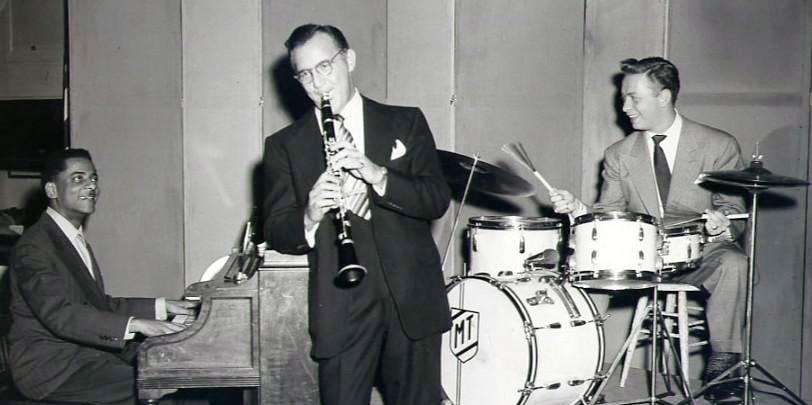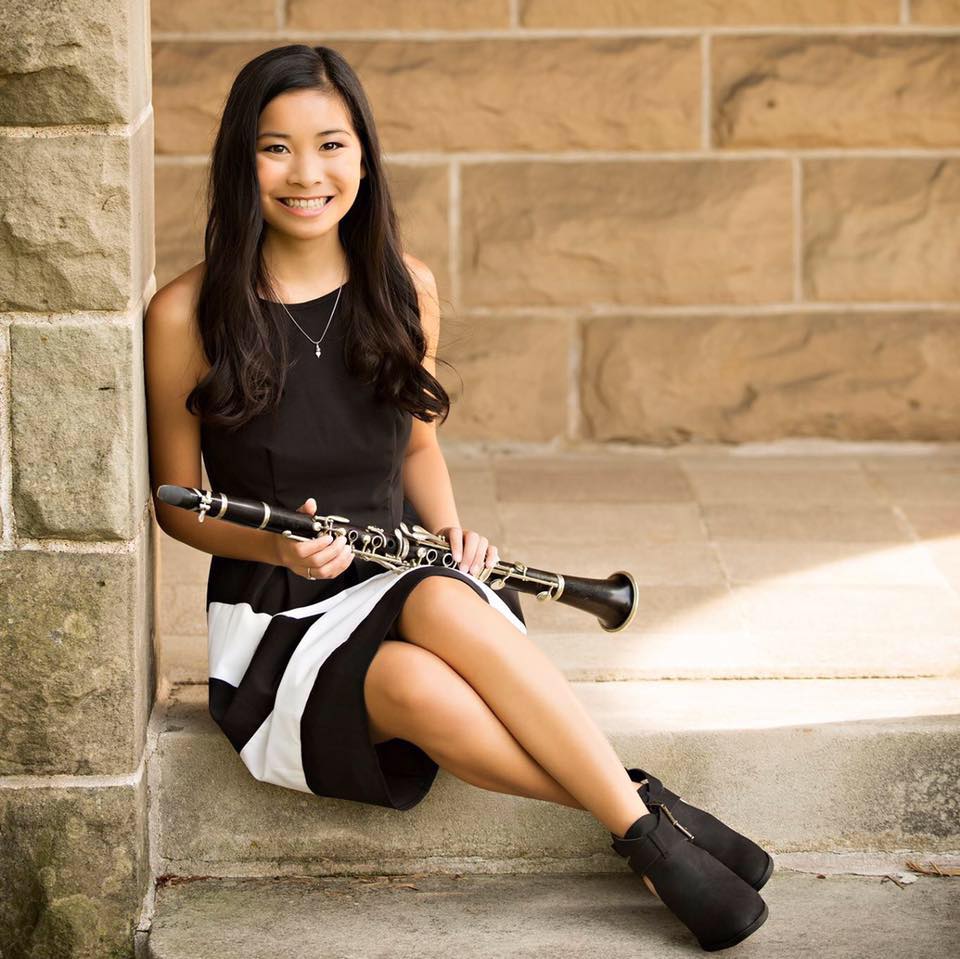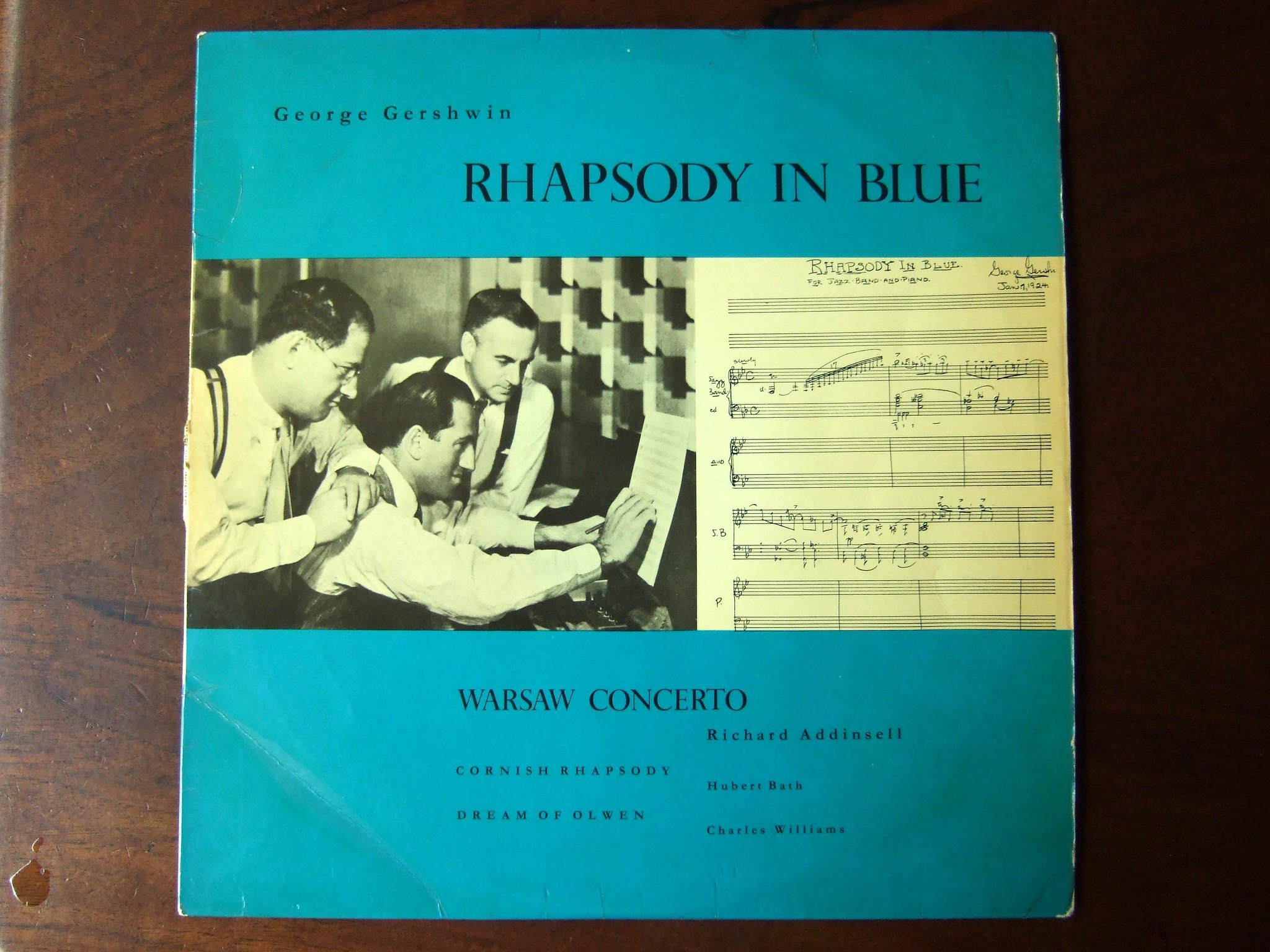Many famous clarinet players throughout the world were and are incredible role models for clarinetists of all levels. As a musician, it is important to find professional musicians to listen to. By listening to a professional, you're able to identify the qualities and characteristics of their sound and tone that you enjoy. Once you've identified those, you can strive to make your sound like theirs. Sometimes we aren't exposed to the high-quality sound our instrument can produce. Jazz musicians are constantly listening and imitating other musicians' sound, tone, and intonation so that it improves their playing. The same can be done for classical players!
The clarinetists listed below are a few of my favorite professional clarinetists to listen to. These clarinetists have made incredible, personal, and unique contributions to music and clarinet history. I hope you enjoy learning about these famous clarinet players!
Classical Clarinetists
Anton Stadler
Anton Stadler was born in 1753. Anton and his brother, Johann, both became famous clarinetists and basset horn players. Anton was known for being exquisite on many wind instruments. Anton and Johann were hired as clarinetists to play with the Imperial Court Orchestra in Vienna. Johann played principal clarinetist and Anton played the second clarinet. Anton loved the chalumeau register of the clarinet so much that he and Theodor Lotz created a clarinet that could reach lower notes than the standard Bb clarinet. This clarinet is called the Basset Horn.
Anton Stadler is significant in music history because of his friendship with Mozart. Mozart said, "I have never heard the like of what you contrived with your instrument. Never should I have thought that a clarinet could be capable of imitating the human voice as it was imitated by you. Indeed, your instrument has so soft and lovely a tone that no one can resist". Mozart's famous Clarinet Concerto was written for Anton Stadler on the basset clarinet. The Clarinet Concerto was the last composition that Mozart wrote before he passed in 1791. Stadler took the Concerto on tour throughout Prague and other musical capitals around the world.
In the video below, Martin Frost is playing Mozart's Clarinet Concerto on a basset horn. You'll notice that the length of the bottom joint is much longer and has extra keys for the chalumeau register.
Sabine Meyer
Early Life
Sabine Meyer was born in Crailsheim, Germany. Meyer started playing the clarinet at an early age. Her father, also a clarinetist, was her first teacher. From there, she studied with Otto Hermann in Stuggart, Germany, and with Hans Deinzer in Hanover, Germany.
Career
Meyer began her career as an orchestral musician and became a member of the Bavarian Radio Symphony Orchestra. Meyer's engagements with concerts and broadcasts led her to musical centers around Europe, Brazil, Israel, Canada, Africa, and Australia for a quarter of a century. For twenty years, she toured the United States and Japan.
Meyer has had many accomplishments throughout her career. She has been awarded eight Echo Classic Awards, Niedersachsen Prize, Brahms Prize, and the Chevalier des Arts et des Lettres in 2010 from the French government.
Meyer and her huspand have professorships at the Musikhochschule Lübeck in Schleswig-Holstein, Germany.
Trio di Clarone
The basset horn is a very rare instrument in the clarinet family. The basset horn is a difficult instrument to master, both technically and in terms of intonation. The basset horn was used in Mozart's Requiem KV626 because of its melancholy, dark tone. Some think the basset horn was Mozart's favorite instrument. Mozart also wrote five Divertimenti for a basset horn trio.
The "Trio di Clarone" was founded in 1983 by Meyer, her husband, and her brother. The inspiration for this trio was to experience what Mozart's Divertimento for Three Basset Horns would have sounded like back in Mozart's time. The repertoire included nearly forgotten compositions of Mozart, as well as many contemporary works. As the trio continued, the repertoire extended to many innovative projects with the Jazz clarinetist Michael Riessler. They also contrasted Mozart's work with important modern compositions. This juxtaposition of repertoire became very successful and intriguing.
The trio performed in Germany and other European countries. They have also toured throughout the United States, Africa, Japan, and China. The trio has performed in many broadcast recordings and tv appearances.
Below is a recording of the Trio di Clarone playing the Divertimento No. 1 in F Major, movement one.
Performances
Meyer has been a much-celebrated solo clarinetist with more than 300 international orchestras. These orchestras include the top orchestras in German, Vienna Philharmonic, Chicago Symphony Orchestra, London Philharmonic Orchestra, NHK Symphony Orchestra Tokyo, Orchestra of Suisse Romenade, and Berlin Philharmonic Orchestra.
Martin Fröst
Martin Frost is an international clarinetist, conductor, and artist for Sony Classical. Frost is known for constantly striving for new ways to "shape, challenge, and rebuild classical music".
Early Life
Frost was born in Sweden in 1970. At age five, Frost began playing the violin. He started showing interest in the clarinet and decided to learn at age eight. Frost studied with Hans Delnzer in Germany and Sölve Kingstedt and Kjell-Ine Stevenson in Stockholm, Sweden.
Career
In May of 2014, Frost received the Leonie Sonning Music Prize. This is known as the highest music prize in the world. Previous recipients have been Leonard Bernstein and Igor Stravinsky.
Frost was the artistic leader of Vinterfest for ten seasons. He then became a joint artistic director of the Stravanger International Chamber Music Festival from 2010-2015. Afterward, he became conductor-in-association for the Norrköping Symphony Orchestra. In 2017, he was appointed chief conductor for the Swedish Chamber Orchestra.
The Projects
Frost's multi-media performance projects - Dollhouse, Genesis, and Retrotopia - are projects that newly shape the norms of traditional concert settings. Frost's collaborating multimedia projects aim to explore new repertoire and to challenge the traditional conventions of classical concerts.
The video below is a trailer for Frost's upcoming project called Genesis. It features Frost as both a soloist and as the conductor. Frost says, "Doing the complete opposite is exciting. You have no idea what's coming next". The show incorporates leading choirs and orchestras, dialogue, conducting, playing, and improvising. The Genesis story specifically is a creation story. Frost says that there is no chronological order because a creation story consists of so much.
Performances
Frost has performed with some of the world's greatest orchestras: The Royal Concertgebouw Orchestra, the New York and Los Angelas Philharmonic Orchestra, the Leipzig Gewandhaus Orchestra, and the Munich Philharmonic. He has also performed at professional venues like Carnegie Hall.
In the video below, Fröst is performing the Klezmer Dances by Gorgan Fröst with the Norwegian Chamber Orchestra. Fröst's performance demonstrates incredible, unique techniques on the clarinet that are rarely used in classical music.
Richard Stoltzman
Richard Stoltzman is a famous clarinetist who fascinates audiences and critics from all genres. Stoltzman's virtuosity, persona, and musicianship makes him one of the most famous clarinetists in the world.
Early Life / Education
Stoltzman graduated from The Ohio State University with a double major in music and mathematics. Afterward, he attended Yale to earn his Master of Music degree. There, he worked with Keith Wilson. He furthered his education and attended Columbia University for his doctorate. At Columbia, he attended he worked with Kalmen Opperman.
Career
Stoltzman was a part of the Marlboro Music Festival for ten years. As a part of this festival, he was able to gain experience in chamber music.
Stoltzman became the founding member of the TASHI ensemble. This ensemble made its debut in 1973.
Stoltzman's unique performances have led him to international fame. Stoltzman could defy the limits of the clarinet. Stoltzman was not only a famous classical clarinetist but a famous jazz clarinetist as well. Stoltzman had played along-side many famous jazz musicians and groups, such as Gary Burton, Canadian Brass, Chick Corea, Steve Gadd, and many more.
In the video below, Stoltzman is performing with the famous jazz group, Chick Corea. As you listen, you'll notice that he incorporates many clarinet techniques that are hardly ever heard in classical clarinet playing. You'll also notice that his sound imitates a soprano saxophone. All of these techniques are very hard to master on the clarinet, which is why Stoltzman is such a role model for jazz clarinetists.
Stoltzman was the first wind player to receive the Avery Fisher Prize. He was also awarded the Sanford Medal, a very prestigious award, from the Yale School of Music. He was featured in the International Emmy Award-winning series "Concerto". In 2013, he was elected to be a fellow of the American of Arts and Sciences.
Performances
Stoltzman has had a wide variety of performances. Performances included tours with the New York Chamber Soloists, a partnership with the Klezmatics at the University of Texas, residency, and tour with the jazz ensemble from the University of Northern Florida, and orchestral performances that included repertoire by Bernstein, Copland, Debussy, Mozart, and Rossini.
One of Stoltzman's most memorable tours were with his piano-playing father, Peter John Stoltzman. Together, they toured around the world. They were featured on NPR's "Performance Today", Weekend Edition, and the Voice of America radio. WGBH Radio names them, "New England's First Family of Classical Music" because of their impressive and unique talent on stage, in the classroom, and throughout the community.
In this video, Stoltzman is performing a West Side Story medley. Notice how his sound and techniques are different from the ones heard by Martin Fröst and Sabine Meyer. Stoltzman's sound imitates a soprano saxophone. The sound is more open, he includes vibrato and growling, and he glissandos between notes. These techniques are what made Stoltzman such a sought after clarinetist.
Stoltzman's music is available for clarinetists of all levels.
Stoltzman took Brahms's Intermezzo Op. 118 No. 2 and transcribed it for clarinet. There are parts for an A clarinet and a Bb clarinet.
Jazz Clarinetists
Benny Goodman
Early Life
Benny Goodman was born May 30, 1909, in Chicago, Illinois. He was the ninth child out of eleven. Goodman's family immigrated to the United States from Russia.
At age ten, Goodman studied music at Kehelah Jacob Synagogue. He studied clarinet with Franz Schoepp who was a member of the Chicago Symphony. Goodman soon joined the band at Hull-House, a settlement house that provided social services to the community. Goodman advanced very quickly on the clarinet.
Career
Goodman, also known as "the king of swing", had his first professional debut in 1921. At age 14, Goodman became a member of the American Federation of Musicians. He decided to step away from education to pursue his musical ambitions.
Two years later, Goodman moved to Los Angeles and joined the Ben Pollack band. He became one of their leading soloists. In 1928, he released his first album, A Jazz Holiday. The following year, he moved to New York City.
In NYC, Goodman teamed up with John Hammond, a jazz promoter, to make recordings. Some recordings included tracks with jazz singer Billie Holiday. Together, they created a top ten hit in 1934 called "Riffin' the Scotch".
Goodman officially began his career as a bandleader in 1934, landing gigs at Billy Rose's Music Hall. Goodman's first number one hit was his instrumental piece, "Moonglow".
In 1935, the Benny Goodman Orchestra began their tour.
On August 21, 1935, the swing era began at the Palomar Ballroom in Los Angeles. This is also a very important date because Goodman helped break down the color barrier in music by having the first integrated band.
Goodman's orchestra was one of the first to perform jazz music at Carnegie Hall in New York in 1938. Goodman's trademark song, "Sing, Sing, Sing" was inducted into the Grammy Hall of Fame that same year.
This video features Benny Goodman and his orchestra playing "Sing, Sing, Sing" from "Hollywood Hotel" films.
Artie Shaw
Early Life
Artie Shaw was born in New York City but grew up in New Haven, Connecticut. Shaw started his musical journey on the saxophone. At age 15, he dropped out of school to pursue saxophone performance. He joined Johnny Cavallaro's dance band and picked up the clarinet while on tour. The clarinet became Shaw's new focus for the rest of his career.
Career
Shaw moved to Cleveland to arrange music for violinist Austin Wylie's orchestra. He also toured with other bands, playing both the clarinet and the saxophone. While on tour, Shaw's reputation began to grow.
Shaw was a studio musician from 1931 to 1935. He formed his first group in 1936. Shaw's band was not like the traditional swing and jazz bands. Traditional jazz ensembles had a clarinet, saxophone, trumpet, trombone, and a rhythm section. Shaw's group had a string quartet, three rhythm instruments, and a clarinet. A string quartet in a jazz ensemble was very unheard of and gained a lot of attention after the ensemble's first performance at the Imperial Theater in New York. The video below, "Interlude in Bb", exemplifies the unique characteristics of Shaw's instrumentation. A singer, saxophonist, and a brass section were added later on. This group soon broke up in March of 1937.
Shaw's next ensemble resembled a traditional jazz ensemble. This group was known for playing popular swing and pop songs. At this point in Shaw's career, he had gained a big following where he felt like he could break the racial divide in music. He hired Billie Holiday, a sensational singer who was black. Shaw hired musicians based on artistry, not on race.
From 1942-1944 (World War II), Shaw served in the Navy. During the war, Shaw performed for Navy personnel. Once the war was over, Shaw was in a state of mental exhaustion. Shaw took a break from music to pursue his interest in writing. Shaw went back and forth between organizing ensembles and writing. Shaw passed away on December 30, 2004, at age 94.
Jimmy Dorsey
Early Life
Jimmy Dorsey and his brother, Tommy Dorsey, both received their musical training from their father. He was a music teacher and a marching band director. Jimmy and Tommy played in several bands together as teenagers. Jimmy played both the alto saxophone and the clarinet.
In 1920, the brothers formed their combo and named it "Dorsey's Novelty Six". In 1922, they changed their combo name to Dorsey's Wild Canaries. They became a well-known combo throughout Baltimore, Md. They were one of the first bands to be broadcasted on the radio. Jimmy often played in jazz groups, big bands, and in the pit for Broadway shows.
Career
Jimmy and Tommy's group, The Dorsey Brother's Orchestra, began recording songs with their "ever-changing group of musicians". The Dorsey Brother's Orchestra mastered both the smooth, popular style of jazz and the more raucous, Dixieland style of jazz music. In 1934, The Dorsey Brother's Orchestra became a stable, full band. They recorded hit songs such as "I Believe in Miracles", "Tiny Little Fingerprints", "Lullaby of Broadway". Many of these recorded hits included Bob Crosby on vocals.
In May of 1935, the Dorsey Brothers Orchestra had broken up. Tommy had left the stage during a live performance because he and Jimmy disagreed on the tempo of a song. The former Dorsey Brothers Orchestra turned into the Jimmy Dorsey Orchestra with Jimmy as their bandleader. Jimmy soon became one of the best bandleaders of his time. The band's distinctive sound emerged through the hit "The Breeze and I". The Jimmy Dorsey Orchestra performed mostly mainstream popular music. However, they were very good at the swing style and it showed during their performances of "Major & Minor Stomp", "Mutiny in the Brass Section", and Waddlin' at the Waldorf".
In 1945, Jimmy and Tommy reunited to record a V-Disc at Liederkranz Hall in New York City. In 1947, the brothers filmed a movie about their musical childhood and their journey as the Dorsey Brothers Orchestra. After the movie, Jimmy returned to his band until the 1950s. Tommy offered Jimmy a spot in the Tommy Dorsey Orchestra. By 1953, the orchestra was once again renamed as The Dorsey Brothers Orchestra. Tommy died in 1956, making Jimmy the new bandleader until he died in 1957.
The recording below is called Clarinet Polka and it was composed by Jimmy Dorsey.
Closing Thoughts
Now that you've learned and listened about a handful of famous clarinet players, you've been able to hear the different characteristics each clarinetist uses in their sound. Furthermore, you've learned about why each of them is significant in music and clarinet history. I encourage you to keep researching and listening to famous musicians and clarinetists to help improve your playing.





